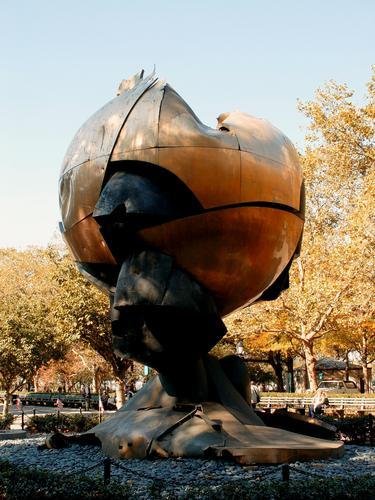
A brief note to append to my last post, about War Memorials: I was rather struck and flabbergasted by the idea that the steel from the World Trade Center was melted down and fashioned into the USS New York.
It's odd -- in the 21st Century, it seems like in general people tend to be bored with metaphor or allegory. There's one huge exception to all this, though, which is the military realm. The military tradition, with its poetic traditions towards the flag and memorials--the 21 gun salute, the language of patches and flags, etc. There's a clear need for this language of metaphor: war is one of the largest, most consuming, tearing experiences, and this intricate dance of metaphors creates a container in which we can place and understand this experience.
When we consumed war, culturally, we didn't used to consume it directly. We consumed war stories, tales of great adventure. Then, again around World War I, something changed. We started reading real short stories, about real soldiers. All Quiet on the Western Front and Heart of Darkness. Real fear, real agony, and a shocking lack of conventional morality--courage, morality and honor, which underpinned the metaphors we had previously relied on in our war stories. When Vietnam came around the cultural war was being fought between the ideological, metaphorical frames ("containment" and "police action" and "national determination") and this new, literal view of war--live coverage.
Which is a better memorial to Vietnam -- the Vietnam memorial, or the infamous photos of brutality in the field?
To return to where I started, we still haven't made that 9/11 memorial here in New York City. In a way, the USS New York is one of our first drafts of our attempts at memorial. Oliver Stone's World Trade Center is another early draft. Stone tries to place 9/11 firmly into the "heroism of man" camp (see also: Shaara's Killer Angels for Civil War). The USS New York invokes the phoenix myth (see also: Obi Wan Kenobi in Star Wars).
 My two favorite memorials to the World Trade Center are both unintentional artifacts. The first, at left, is Fritz Koenig's The Sphere, which is now in Battery Park--it's a sculpture of a whole golden globe, which used to sit in the midst of the Trade Center plaza, symbolizing the globalization of wealth. Which is a pretty empty symbol, to me--simplistic, hearkening back to "In America the streets are paved with gold." On the day of the disaster, rubble fell onto the Sphere, punching holes into it, revealing it to be hollow (if you look at the pre-9/11 photos, it certainly looks solid). There, you have both sides of the equation--the whole golden globe, representing the unity of the world both in globalization and in the aftermath of the disaster, and the holes knocked into it by those who were in the gaps of that golden globe, countries like Afghanistan that were left behind. They were gaps in the globe before, but because we ignored them (pretended that they were part of it), they lashed out and knocked their own hole in the globe.
My two favorite memorials to the World Trade Center are both unintentional artifacts. The first, at left, is Fritz Koenig's The Sphere, which is now in Battery Park--it's a sculpture of a whole golden globe, which used to sit in the midst of the Trade Center plaza, symbolizing the globalization of wealth. Which is a pretty empty symbol, to me--simplistic, hearkening back to "In America the streets are paved with gold." On the day of the disaster, rubble fell onto the Sphere, punching holes into it, revealing it to be hollow (if you look at the pre-9/11 photos, it certainly looks solid). There, you have both sides of the equation--the whole golden globe, representing the unity of the world both in globalization and in the aftermath of the disaster, and the holes knocked into it by those who were in the gaps of that golden globe, countries like Afghanistan that were left behind. They were gaps in the globe before, but because we ignored them (pretended that they were part of it), they lashed out and knocked their own hole in the globe.